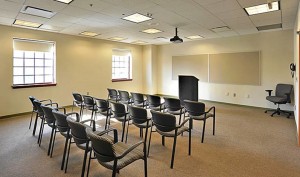 Who really thinks that large factory size schools where principals and teachers carry walkie-talkies to manage the place are better than small schools with fewer students in each class room?
Who really thinks that large factory size schools where principals and teachers carry walkie-talkies to manage the place are better than small schools with fewer students in each class room?
If you’ve ever taught a class, or attended one, you know you can give or get more attention in a smaller class, and it’s hard for any son or daughter to get lost or hide from the teacher’s attention when the class is smaller.
We all know what drives the super-sized school is the uncontrolled residential development that, these days, burdens all manner of resources including whether our aquifers can continue to supply enough water for all the wells that will be necessary to serve the residential deluge as yet unbuilt.
We have folk, mostly elected, who rattle the budgetary sabre, threatening to close the small legacy schools, running them down, slandering them – in my opinion.
It’s a test of political wills, to see if the political class can cauterize the right-minded impulse of communities and parents who prefer that small schools educate our young.
What’s the proof that small schools are better?
Let’s consider New York City’s experience. New York City has more than 1,200 schools and in excess of a million students. There’s little that’s small about the Big Apple. The City was put to the test when they had to resolve what to do about the many, large, failing high schools. What to do? Former Mayor Mike Bloomberg thought to replace them with smaller schools, to give the students more personal attention, and a more challenging curriculum.
Starting in 2002, with a hand from the Bill and Melinda Gates Foundation and other charitable entities, New York City closed down the large schools and started hundreds of new small secondary schools.
Just as the core standards for comparing educational progress went national, so did the small school movement.
Of course, the nay-sayers asked – “Where’s the proof that these small schools make any difference in performance?”
Well we have the proof – based on New York’s experience.
MDRC, a non-profit, non-partisan education and social policy research firm, released its most recent findings, on October 16, 2014, after studying the small public high schools in New York City. These schools mostly serve disadvantaged students of color. The study shows that these small schools “not only raise[d] graduation rates by 9.4 percentage points, but they boost[ed] college enrollment by 8.4 percentage points.”
MDRC found that “the effects are seen in virtually every student group attending these schools, including male and female students of color, students with below grade level eighth-grade proficiency scores in math and reading, low-income students, and students in special education.”
Gordon Berlin, the President of MDRC, said, “What is truly remarkable, though, about these results is that a high school reform has had a measurable effect on college-going and it has done so at scale – across scores of public high schools.”
The Superintendent of Schools, elected School Boards, and the Board of Supervisors should start thinking out of the factory size box schools that we’ve been building, and begin building smaller schools — now that we have proof that smaller is better.
